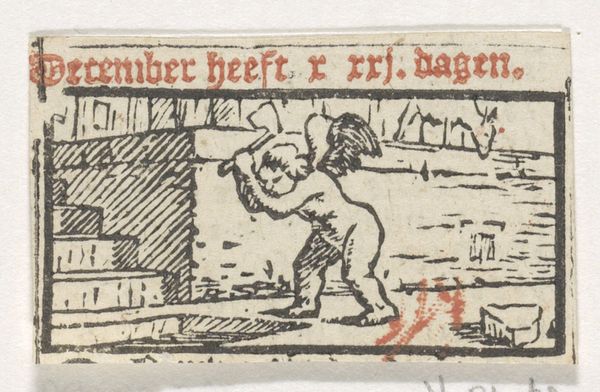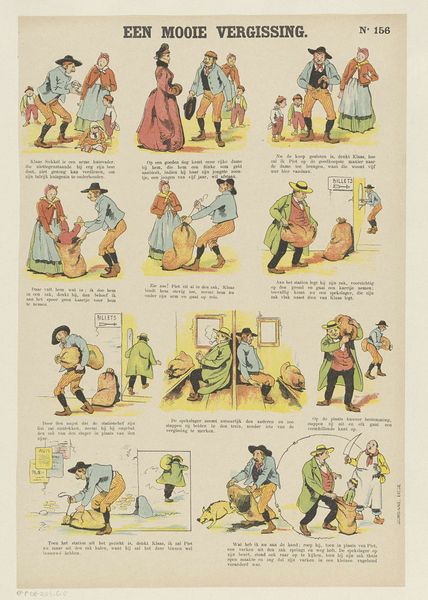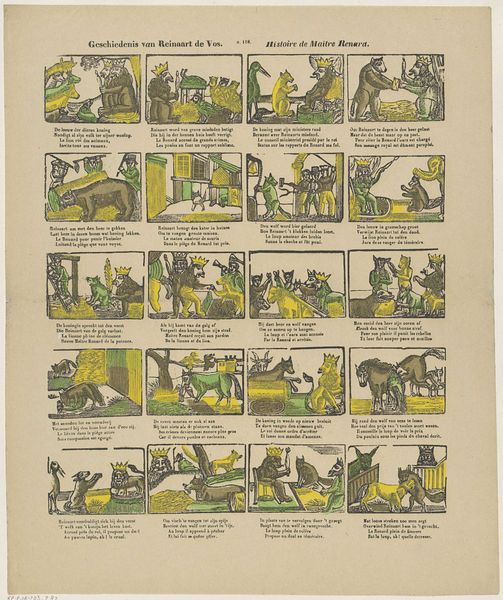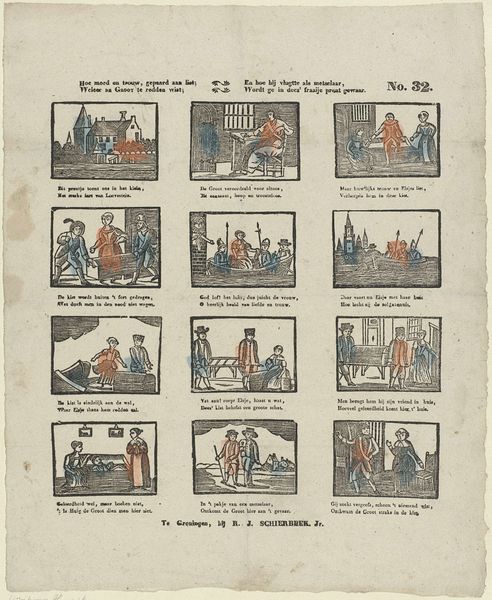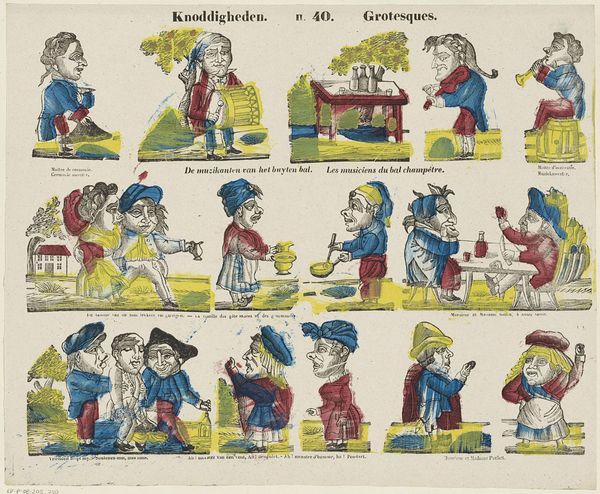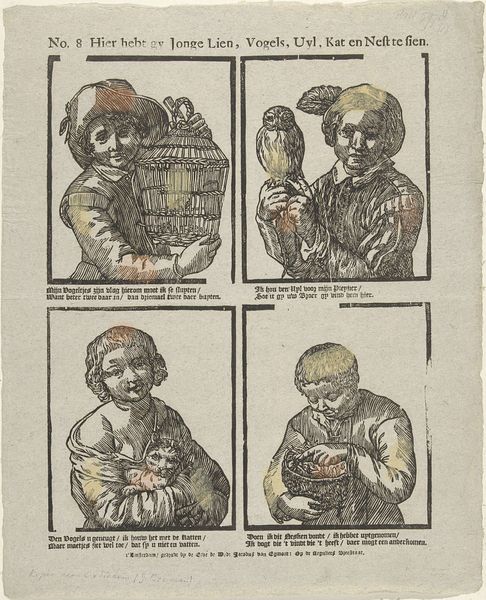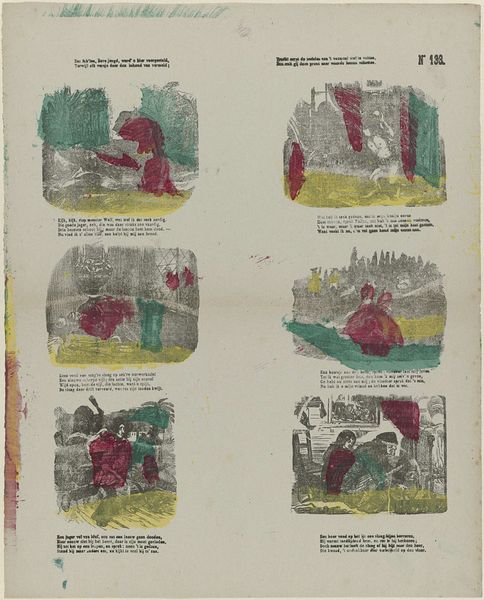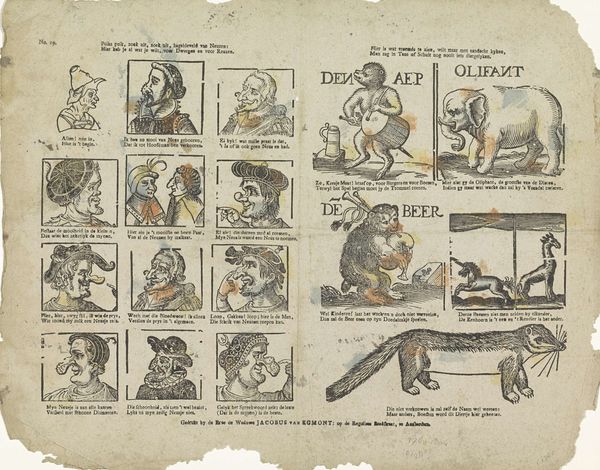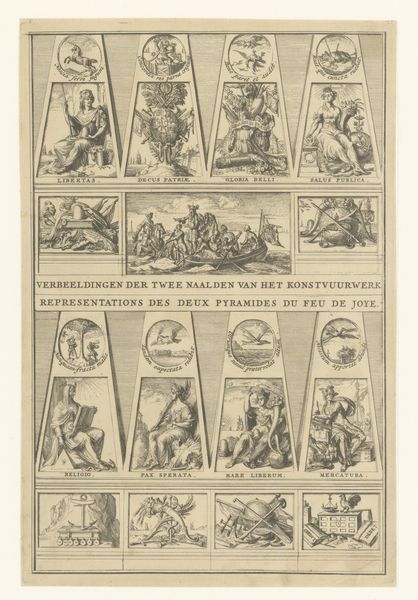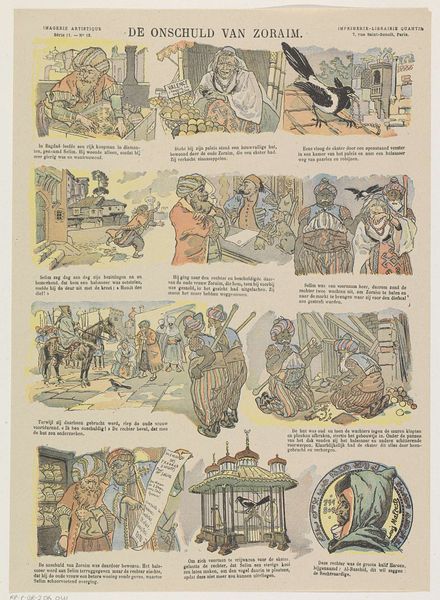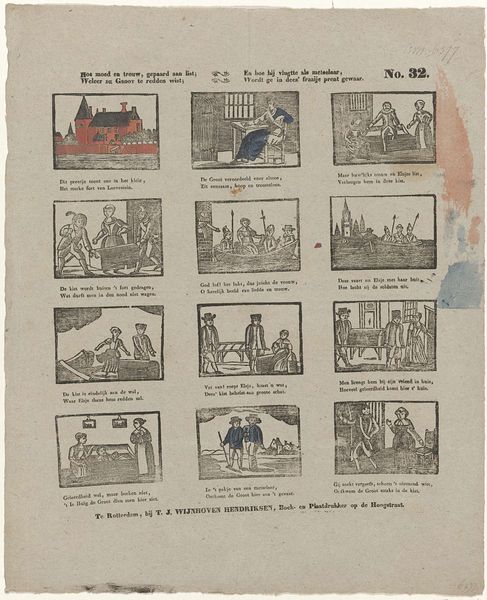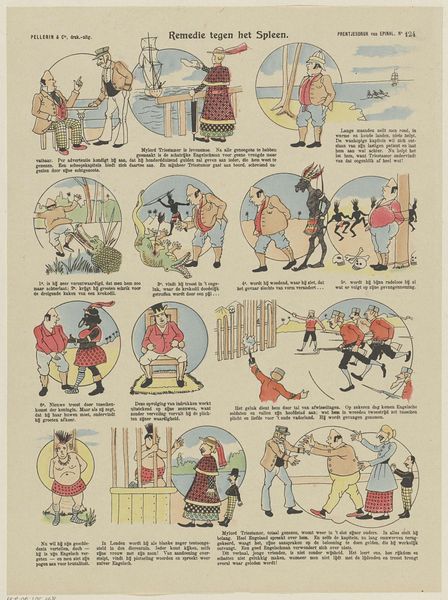
Dimensions: height 100 mm, width 145 mm
Copyright: Rijks Museum: Open Domain
Curator: This print, entitled “China en de Mogendheden, envelop,” dates to somewhere between 1900 and 1918. It seems to be an advertisement, designed by the artist A. Reyding to promote a set of satirical postcards. Editor: My first impression is, well, this is striking. It feels like a raw nerve, doesn't it? A bald, straggly-haired figure is aggressively approaching a floating, angry head. It’s cartoonish, yet something about the anger feels palpable. Curator: It is rather unsettling, even with the passage of time. Consider the visual language: we have a Chinese man poised to strike a caricatured Western face swinging menacingly toward him, suggesting colonial aggression and the threat of Western powers, very clearly referencing the Boxer Rebellion. Editor: That tension is built right into the design. There's this looming, detached face seemingly controlled like a wrecking ball... and it appears about to collide with this man. Curator: Note also the title’s insinuation that the Western “Mogendheden,” the "Powers", have weight over China. It echoes the widespread sentiments about the colonial presence and control exerted by European powers in China during that period. These anxieties made their way into everyday objects and advertisements, not just fine art. Editor: Yes! The power dynamic is certainly baked into this small image. It makes you wonder about the role of propaganda and visual messaging shaping attitudes in both China and the West during these decades. It looks cheaply made, which seems deliberate to target and influence ordinary people in public. Curator: Precisely! The cartoonishness could easily disguise the political agenda to the unknowing observer. The very design invites consumers to consider, and likely perpetuate, pre-existing feelings towards China, which reinforces the political undertones and historical significance of the object. It becomes a quiet symbol of the fraught history and persistent stereotypes of its era. Editor: It also hits you directly—like a punch in the gut. All these postcards in this envelope must have played with the volatile social attitudes about foreign relations at the time. It's a powerful and succinct message... especially from such a small, throwaway print.
Comments
No comments
Be the first to comment and join the conversation on the ultimate creative platform.

